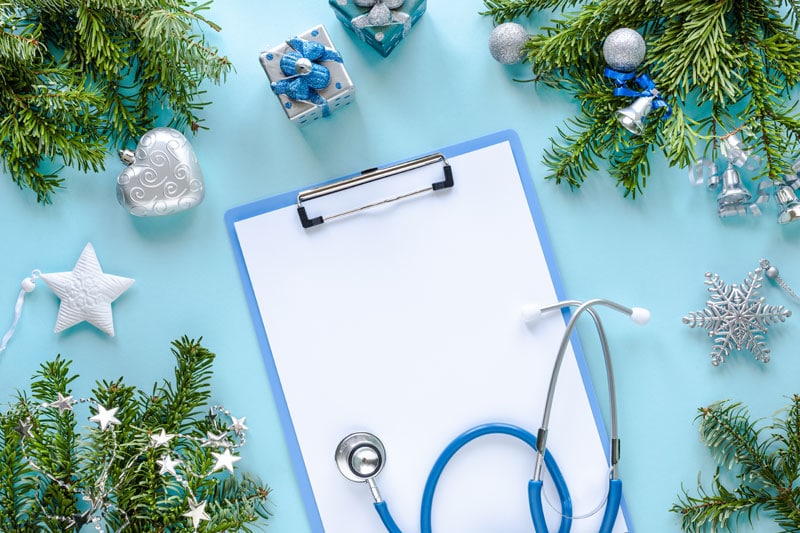Holidays are an occasion to reconnect with family and friends. However, this holiday season may not be the same as others. Most people consider modifying their holiday plans to reduce the spread of COVID-19 to keep friends, families, and communities healthy and safe.
To prevent the spread, CDC recommends celebrating the winter holidays safely at home with one’s own household. Several factors can contribute to the risk of getting and spreading the disease such as exposure during travel, location and duration of the gathering, crowd of people at the gathering, and behaviors of attendees prior to and during the gathering. To celebrate this Christmas season, consider fun alternatives that pose lower risk of spreading COVID-19. Injuries and accidents may also happen during holidays, leading to increased ER visits. Healthcare providers can rely on professional medical coding companies to report these injuries on the medical claims with accurate diagnosis and procedure codes.
Here are some common injuries that may occur during holiday gatherings or Christmas celebrations and their related ICD-10 codes –
Lower Back Pain
Falls or lifting heavy things can lead to nerve impingement, herniated disk, disk degeneration, chronic back pain, and simple spine fractures.
- M54.5 Low back pain
Falls while decorating
While decorating for Christmas can be fun, it may also lead to injuries. Injuries can happen while putting up Christmas lights also.
- W14 Fall from tree
- W14.XXXA Fall from tree, initial encounter
- W14.XXXD Fall from tree, subsequent encounter
- W14.XXXS Fall from tree, sequela
Snow Shoveling
Shoveling snow can lead to a range of injuries, ranging from an aching back to broken bones, muscle strains, painful bruises or a heart attack.
W00 Fall due to ice and snow
- W00.0 Fall on same level due to ice and snow
- W00.0XXA …… initial encounter
- W00.0XXD …… subsequent encounter
- W00.0XXS …… sequela
Ankle Sprains
Since it is common to wear high heels or narrow-toed footwear for parties, often women suffer aching foot, bursitis or ankle sprain.
- S93.4 Sprain of ankle
- S93.40 Sprain of unspecified ligament of ankle
- S93.401 Sprain of unspecified ligament of right ankle
- S93.402 Sprain of unspecified ligament of left ankle
- S93.409 Sprain of unspecified ligament of unspecified ankle
- S93.40 Sprain of unspecified ligament of ankle
- M79.67 Pain in foot and toes
Kitchen Burns
During the Christmas season, baking cakes and making sweets are customary. If not careful, oven burns may happen and accidents may happen out of hot grills.
- X15 Contact with hot household appliances
- X15.0 Contact with hot stove (kitchen)
- X15.0XXA …… initial encounter
- X15.0XXD …… subsequent encounter
- X15.0XXS …… sequela
Frostbite
During winter, the skin will get exposed to extremely cold temperatures, which will lead to frostbite that typically affects the fingers, toes, face, and ears.
- T33 Superficial frostbite
- T33.0 Superficial frostbite of head
- T33.1 Superficial frostbite of neck
- T33.2 Superficial frostbite of thorax
- T33.3 Superficial frostbite of abdominal wall, lower back and pelvis
- T33.4 Superficial frostbite of arm
- T33.5 Superficial frostbite of wrist, hand, and fingers
- T33.6 Superficial frostbite of hip and thigh
- T33.7 Superficial frostbite of knee and lower leg
- T33.8 Superficial frostbite of ankle, foot, and toe(s)
- T33.9 Superficial frostbite of other and unspecified sites
Knee Injuries
Winter sports such as skiing, snowboarding, ice skating, hockey, and other outdoor winter activities may lead to painful knee injuries or even a torn ACL (anterior cruciate ligament).
- S83.51 Sprain of anterior cruciate ligament of knee
- S83.511 Sprain of anterior cruciate ligament of right knee
- S83.512 Sprain of anterior cruciate ligament of left knee
- S83.519 Sprain of anterior cruciate ligament of unspecified knee
Hypothermia
If the body temperature gets too low in winter, it can result in hypothermia, which can affect the brain and nervous system, the cardiovascular system, and the liver.
- T68 Hypothermia
- T68.XXXA Hypothermia, initial encounter
- T68.XXXD Hypothermia, subsequent encounter
- T68.XXXS Hypothermia, sequela
Concussions
Sledding, snowboarding, and other winter activities are all fun, but may result in intracranial injuries like concussions –
- S06.0 Concussion
- S06.0X0 Concussion without loss of consciousness
- S06.0X1 Concussion with loss of consciousness of 30 minutes or less
- S06.0X9 Concussion with loss of consciousness of unspecified duration
It is important to take safety measures to prevent winter injuries. Healthcare professionals can benefit from medical coding services to assign ICD-10 codes to report all types of injuries during the holiday season.




